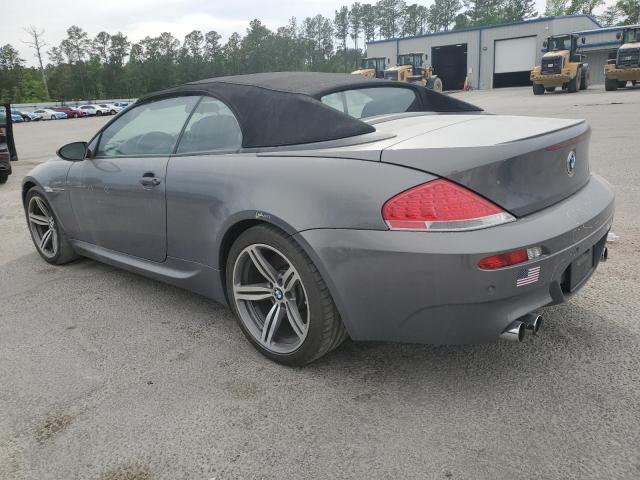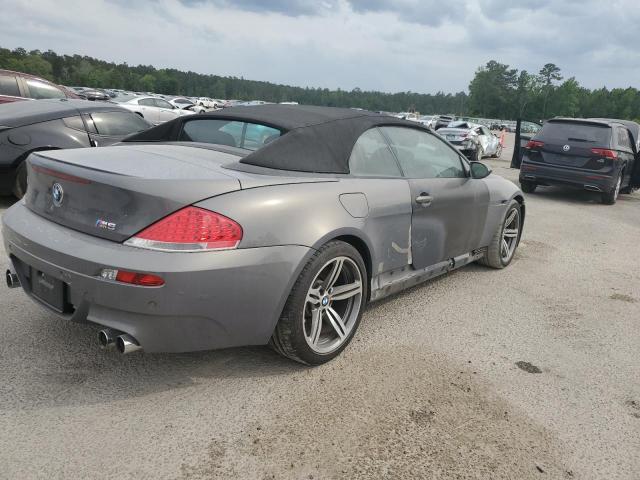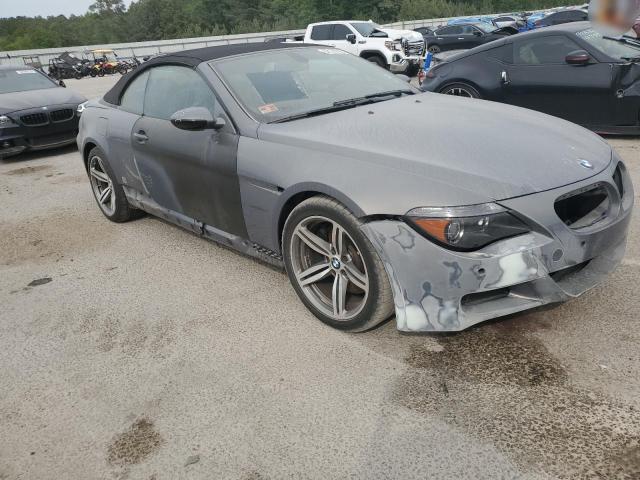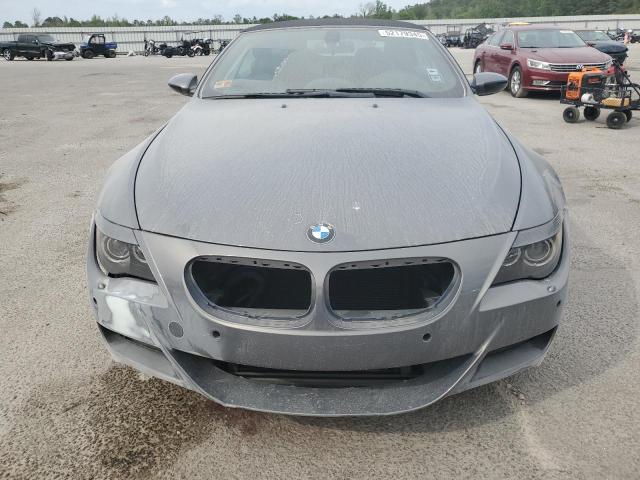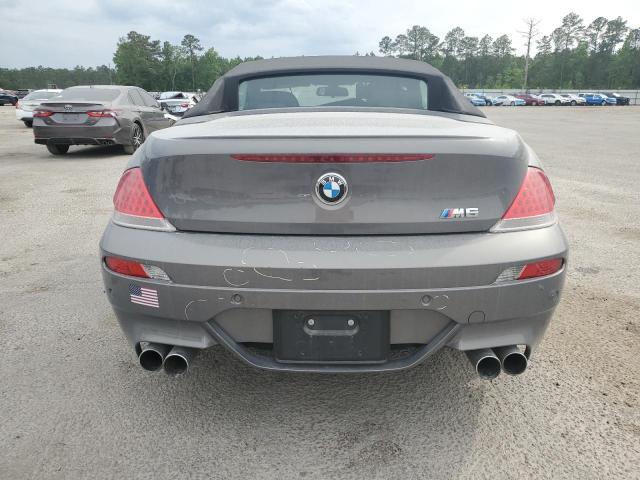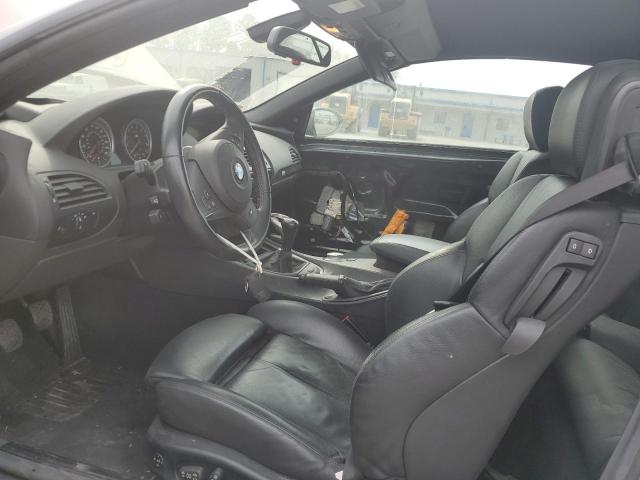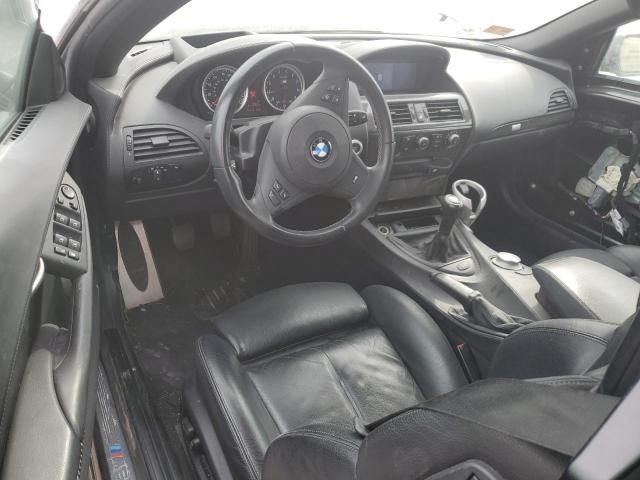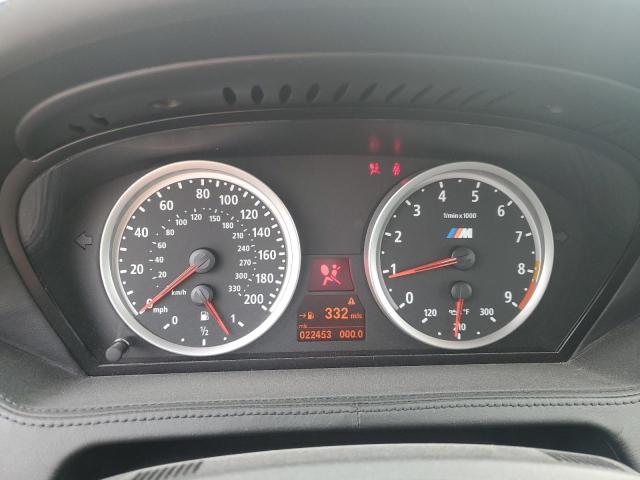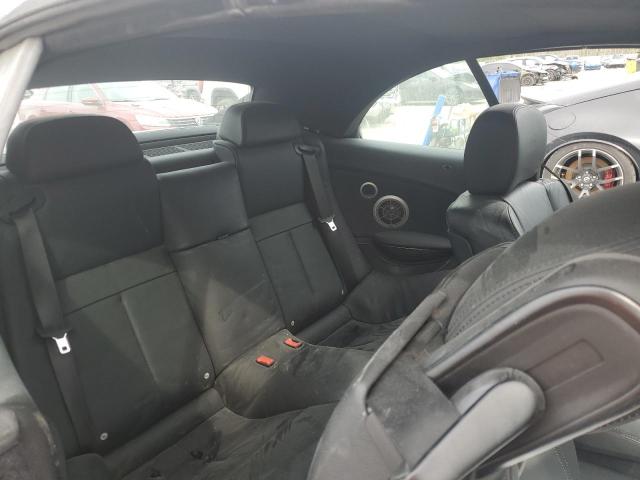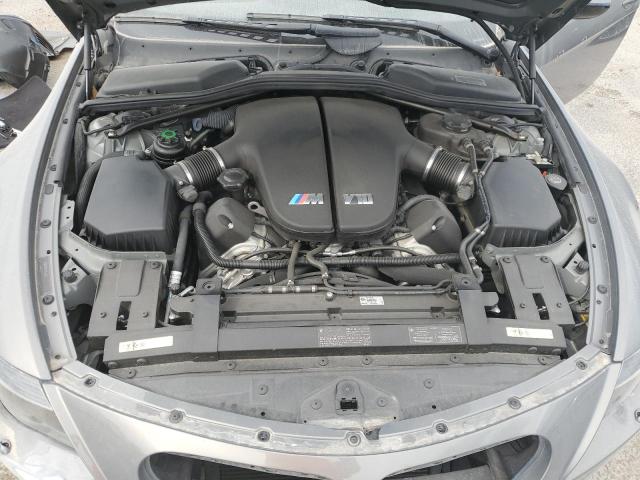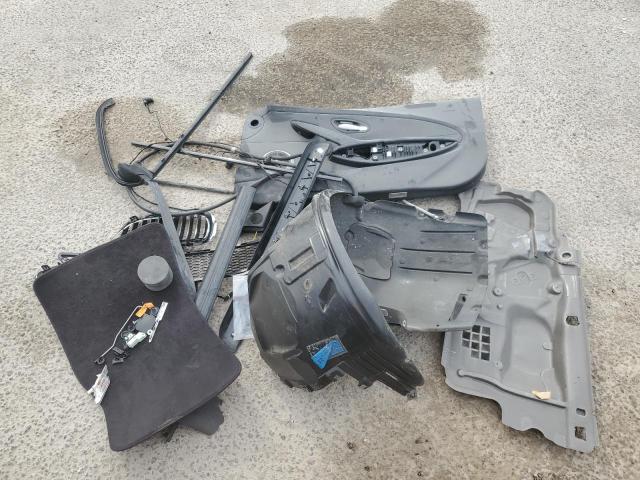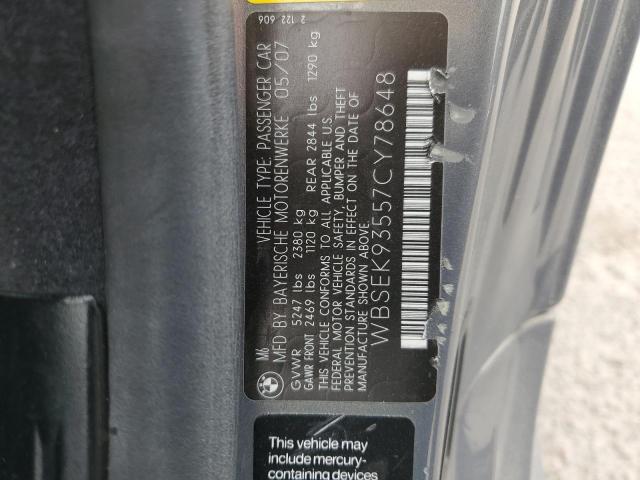2007 BMW M6 | WBSEK93557CY78648
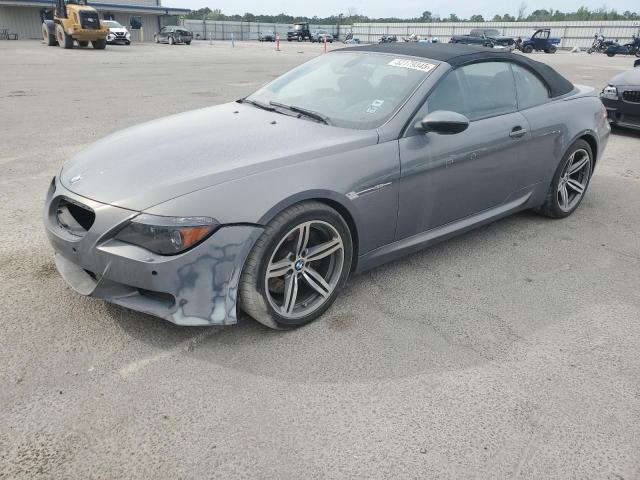 ❯
❯
Specifications
1
~$110,000
Engine: 5.0L naturally aspirated V10
Torque: 520 Nm
0–100 km/h: ~4.6 s
The E63 M6 was powered by a Formula 1-inspired, high-revving 5.0-liter V10 engine—an engineering statement that defined the mid-2000s M philosophy. Producing 507 horsepower at 7,750 rpm and peaking at 8,250 rpm, the S85 engine delivered an experience as intense as it was visceral. With 520 Nm of torque and a sharp throttle mapped through the SMG III sequential gearbox, the M6 launched to 100 km/h in 4.6 seconds, while unleashing a wailing exhaust note that crescendoed into a mechanical symphony unmatched even by modern turbos.
Dynamically, the car was as capable as it was complex. Weighing over 1,700 kg, it relied on advanced electronics like Dynamic Stability Control, an Active M differential, and EDC (Electronic Damper Control) to remain composed at the limit. The chassis, derived from the 6 Series Gran Turismo coupé, featured a double-wishbone front and multi-link rear suspension, and its tuning allowed for confidence in high-speed sweepers while still punishing apexes with precision. The SMG III transmission could shift in as little as 65 milliseconds in the most aggressive mode—though it demanded driver commitment and technique.
The E63 M6 wasn’t for casual drivers. It was raw, wild, and occasionally intimidating, but endlessly rewarding when driven with intent. It offered supercar acceleration in a grand touring suit—a motorsport engine wrapped in leather and carbon, with a control interface designed for those fluent in M dynamics.
Body Styles
The M6 was offered in two body styles: the low-slung Coupé (E63) and the elegant Convertible (E64). The Coupé featured a long hood, short deck, and muscular haunches, underlined by a flowing roofline made from exposed carbon fiber—a weight-saving measure that also lowered the center of gravity. The front fascia bore larger air intakes and a more sculpted chin, while the rear featured quad exhausts and a subtle integrated spoiler. The Convertible retained much of the Coupé’s silhouette, though its folding soft top and additional structural bracing added weight and complexity. Despite that, it maintained the same mechanical heart and attitude, offering open-air access to the V10’s scream.
Model Name Meaning (Manufacturer)
The “M6” badge fused BMW’s grand touring legacy with Motorsport heritage. The “6” identified the model class—luxury GT coupé—while the “M” signaled the full-blooded M division treatment. In the E63, the name resurrected a badge not seen since the E24 of the 1980s, signaling a return to flagship-level performance under the M banner.
Body & Interior Colors and Rims
Exterior color choices included classic BMW M hues like Interlagos Blue, Silverstone, and Sepang Bronze, as well as deeper tones such as Indianapolis Red, Alpine White, and Sapphire Black. BMW Individual added options like Frozen Gray or Moonstone Metallic for discerning buyers. The carbon fiber roof on the Coupé contrasted sharply with lighter body colors, emphasizing its racing intent. Chrome accents were minimal, replaced by satin finishes and Shadowline trim, with subtle M badging throughout.
Inside, the M6 mixed luxury with performance restraint. Merino leather upholstery was standard in colors like Black, Silverstone, and Indianapolis Red, with optional two-tone configurations. The dashboard featured carbon fiber or dark wood trim, with M logos embossed in the headrests and door sills. The center console housed the SMG controls, M Drive selector, and programmable shift logic display. A thick three-spoke M steering wheel, aluminum pedals, and traditional analog gauges completed a cockpit that was both luxurious and motorsport-inspired.
Wheels came standard in 19-inch M double-spoke forged designs, with optional lightweight styles in polished or shadow-finished variations. Staggered fitments with wide rear tires ensured grip under high torque loads, while optional carbon-ceramic brakes in select markets added stopping precision. The wheel designs complemented the car’s wide fenders and aggressive stance, giving the M6 a presence equal parts athletic and elegant.
Top Expensive Options
- SMG III Sequential Transmission with Drivelogic: $3,000
- Carbon Ceramic Brakes (limited availability): $8,500
- Full Merino Leather Interior with Extended Trim: $4,100
- Adaptive LED Headlights with Auto-Leveling: $2,200
- M Multifunction Seats with Lumbar and Active Bolsters: $2,500
- Bang & Olufsen High-End Sound System: $4,500
- Head-Up Display with M Mode Integration: $1,300
- Soft-Close Doors and Comfort Access Package: $1,600
- BMW Individual Exterior Paint or Interior Combo: $5,000
- Convertible Wind Deflector and Heat-Reflective Leather: $1,200
vs Competitors
The M6 went head-to-head with the Mercedes-Benz CL63 AMG and the Jaguar XKR. Where the AMG offered effortless torque and the XKR aimed for charm and fluidity, the M6 delivered aggression and edge. Its V10 was unlike anything else in the class—more exotic than the AMG’s V8 and more explosive than the Jag’s supercharged lump. In handling, it felt more connected than either, albeit more demanding. It was less of a GT cruiser and more of a sharpened grand tourer with supercar character. Where others smoothed out the experience, the M6 made you earn it—and that effort was part of its appeal.
Fun Fact
The E63 M6 shared its S85 V10 engine with the E60 M5, an engine directly inspired by BMW’s Formula 1 program of the early 2000s. Not only did it rev beyond 8,000 rpm, but it also featured ten individual throttle bodies—making it one of the most advanced naturally aspirated road engines ever produced by BMW.
Lot Details
-
Sale Date11/Jun/2025
-
Lot Number52179345
-
Sale document
-
Location
-
Odometer22,453 miles (36,135 km)
-
Primary Damage:ALL OVER
-
Secondary DamageSIDE
-
Fuel
-
Engine Type5.0L 10
-
Transmission
-
Drive Type
-
Color
Final Bid BMW M6 (2007)
$10,000
$13,850
$17,700
Specifications
1
~$110,000
Torque:
0–100 km/h:
The E63 M6 was powered by a Formula 1-inspired, high-revving 5.0-liter V10 engine—an engineering statement that defined the mid-2000s M philosophy. Producing 507 horsepower at 7,750 rpm and peaking at 8,250 rpm, the S85 engine delivered an experience as intense as it was visceral. With 520 Nm of torque and a sharp throttle mapped through the SMG III sequential gearbox, the M6 launched to 100 km/h in 4.6 seconds, while unleashing a wailing exhaust note that crescendoed into a mechanical symphony unmatched even by modern turbos.
Dynamically, the car was as capable as it was complex. Weighing over 1,700 kg, it relied on advanced electronics like Dynamic Stability Control, an Active M differential, and EDC (Electronic Damper Control) to remain composed at the limit. The chassis, derived from the 6 Series Gran Turismo coupé, featured a double-wishbone front and multi-link rear suspension, and its tuning allowed for confidence in high-speed sweepers while still punishing apexes with precision. The SMG III transmission could shift in as little as 65 milliseconds in the most aggressive mode—though it demanded driver commitment and technique.
The E63 M6 wasn’t for casual drivers. It was raw, wild, and occasionally intimidating, but endlessly rewarding when driven with intent. It offered supercar acceleration in a grand touring suit—a motorsport engine wrapped in leather and carbon, with a control interface designed for those fluent in M dynamics.
Body Styles
The M6 was offered in two body styles: the low-slung Coupé (E63) and the elegant Convertible (E64). The Coupé featured a long hood, short deck, and muscular haunches, underlined by a flowing roofline made from exposed carbon fiber—a weight-saving measure that also lowered the center of gravity. The front fascia bore larger air intakes and a more sculpted chin, while the rear featured quad exhausts and a subtle integrated spoiler. The Convertible retained much of the Coupé’s silhouette, though its folding soft top and additional structural bracing added weight and complexity. Despite that, it maintained the same mechanical heart and attitude, offering open-air access to the V10’s scream.
Model Name Meaning (Manufacturer)
The “M6” badge fused BMW’s grand touring legacy with Motorsport heritage. The “6” identified the model class—luxury GT coupé—while the “M” signaled the full-blooded M division treatment. In the E63, the name resurrected a badge not seen since the E24 of the 1980s, signaling a return to flagship-level performance under the M banner.
Body & Interior Colors and Rims
Exterior color choices included classic BMW M hues like Interlagos Blue, Silverstone, and Sepang Bronze, as well as deeper tones such as Indianapolis Red, Alpine White, and Sapphire Black. BMW Individual added options like Frozen Gray or Moonstone Metallic for discerning buyers. The carbon fiber roof on the Coupé contrasted sharply with lighter body colors, emphasizing its racing intent. Chrome accents were minimal, replaced by satin finishes and Shadowline trim, with subtle M badging throughout.
Inside, the M6 mixed luxury with performance restraint. Merino leather upholstery was standard in colors like Black, Silverstone, and Indianapolis Red, with optional two-tone configurations. The dashboard featured carbon fiber or dark wood trim, with M logos embossed in the headrests and door sills. The center console housed the SMG controls, M Drive selector, and programmable shift logic display. A thick three-spoke M steering wheel, aluminum pedals, and traditional analog gauges completed a cockpit that was both luxurious and motorsport-inspired.
Wheels came standard in 19-inch M double-spoke forged designs, with optional lightweight styles in polished or shadow-finished variations. Staggered fitments with wide rear tires ensured grip under high torque loads, while optional carbon-ceramic brakes in select markets added stopping precision. The wheel designs complemented the car’s wide fenders and aggressive stance, giving the M6 a presence equal parts athletic and elegant.
Top Expensive Options
- SMG III Sequential Transmission with Drivelogic: $3,000
- Carbon Ceramic Brakes (limited availability): $8,500
- Full Merino Leather Interior with Extended Trim: $4,100
- Adaptive LED Headlights with Auto-Leveling: $2,200
- M Multifunction Seats with Lumbar and Active Bolsters: $2,500
- Bang & Olufsen High-End Sound System: $4,500
- Head-Up Display with M Mode Integration: $1,300
- Soft-Close Doors and Comfort Access Package: $1,600
- BMW Individual Exterior Paint or Interior Combo: $5,000
- Convertible Wind Deflector and Heat-Reflective Leather: $1,200
vs Competitors
The M6 went head-to-head with the Mercedes-Benz CL63 AMG and the Jaguar XKR. Where the AMG offered effortless torque and the XKR aimed for charm and fluidity, the M6 delivered aggression and edge. Its V10 was unlike anything else in the class—more exotic than the AMG’s V8 and more explosive than the Jag’s supercharged lump. In handling, it felt more connected than either, albeit more demanding. It was less of a GT cruiser and more of a sharpened grand tourer with supercar character. Where others smoothed out the experience, the M6 made you earn it—and that effort was part of its appeal.
Fun Fact
The E63 M6 shared its S85 V10 engine with the E60 M5, an engine directly inspired by BMW’s Formula 1 program of the early 2000s. Not only did it rev beyond 8,000 rpm, but it also featured ten individual throttle bodies—making it one of the most advanced naturally aspirated road engines ever produced by BMW.


